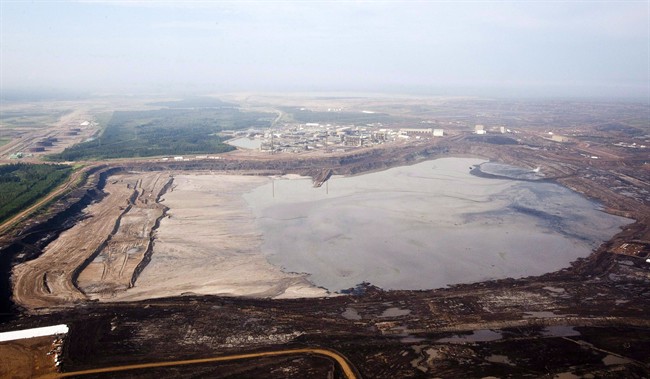In a potentially transformative shift for Alberta’s energy sector, industry leaders and environmental engineers are exploring a bold solution to one of the oilsands’ most persistent challenges: storing massive volumes of toxic tailings waste deep underground, away from vulnerable surface ecosystems.
The concept, detailed in a comprehensive report released Tuesday by the Alberta Energy Regulator, examines the feasibility of injecting tailings—a mixture of water, clay, sand, and residual bitumen—into depleted oil and gas reservoirs thousands of meters below the surface, effectively returning extracted materials to their geological origins.
“We’re examining a circular approach to waste management,” said Dr. Helena Moreau, lead geologist at the Alberta Energy Research Institute. “The technical challenge is immense, but the environmental benefits could be revolutionary for an industry struggling to balance production with sustainability commitments.”
Alberta’s oilsands operations currently maintain over 1.4 trillion liters of tailings in surface ponds covering approximately 220 square kilometers—an area larger than the city of Vancouver. These vast toxic reservoirs represent both an environmental liability and a public relations challenge for Canada’s largest oil-producing province.
The underground storage proposal has garnered cautious support from unlikely allies. The Pembina Institute, traditionally critical of oilsands environmental practices, acknowledged the potential benefits while emphasizing rigorous safety protocols.
“Moving tailings below ground could significantly reduce risks to surface water and wildlife,” said Pembina spokesperson James Richardson. “However, we need absolute certainty about containment integrity and comprehensive monitoring systems before any large-scale implementation.”
Industry estimates suggest underground storage could reduce surface tailings volumes by up to 30% within a decade, though significant technological hurdles remain. The process would require extensive water treatment, specialized injection technologies, and monitoring systems to prevent contamination of groundwater aquifers.
Financial implications are equally complex. Initial capital costs for underground injection infrastructure could exceed $2 billion across the sector, according to analysis from TD Securities. However, these investments might be offset by reduced reclamation obligations and improved environmental performance metrics that satisfy increasingly climate-conscious investors.
Indigenous communities, whose territories overlap with oilsands developments, have expressed both interest and concern about the proposal. Grand Chief Arthur Noskey of Treaty 8 First Nations emphasized the need for meaningful consultation.
“Our people have lived with the consequences of surface tailings for generations,” Noskey stated. “Any new approach must include Indigenous knowledge systems and guarantee the protection of traditional lands for future generations.”
The Alberta government has signaled support for exploring underground storage options as part of its strategy to address the province’s estimated $33 billion in environmental liabilities from oil and gas development. Energy Minister Brian Jean characterized the initiative as “innovative problem-solving that maintains Alberta’s competitive edge while addressing legitimate environmental concerns.”
Critics argue that focusing on tailings storage distracts from the more fundamental challenge of reducing fossil fuel production as Canada works toward its climate commitments. However, with oilsands operations projected to continue for decades, practical waste management solutions remain essential regardless of broader energy transition timelines.
The regulatory framework for implementing underground tailings storage would require significant revision of existing provincial guidelines, a process that could take years. Pilot projects might begin as early as 2026, with industry leaders Suncor and Canadian Natural Resources Limited expressing interest in proving the concept.
As Alberta navigates the complex intersection of energy production, environmental protection, and economic development, underground tailings storage represents a promising if complicated path forward. But the fundamental question remains: can technological innovation adequately address the environmental footprint of Canada’s most carbon-intensive industry, or are more transformative changes to our energy systems ultimately required?










